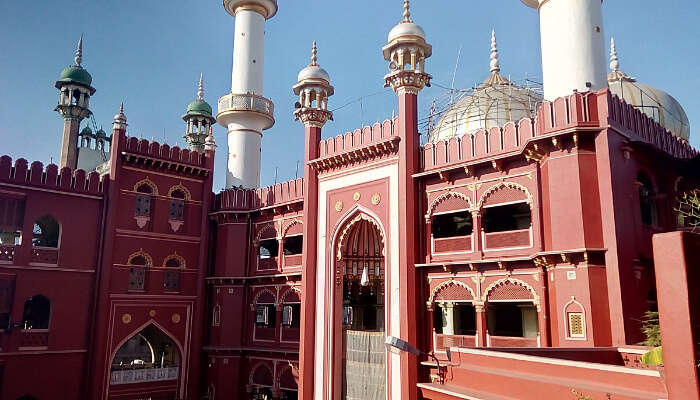
The mosque was built as an imitation of the mausoleum of Mughal Emperor Akbar at Sikandra, Agra, by Kutchi Memon Jamat, a small community of Sunni Muslim community from Kutch. Abdur Rahim Osman, a leader of the Kutchi Memon Jama'at, who funded the building, was a shipping prince: The mosque was named Nakhoda, meaning Mariner. The foundation stone was laid on 11 September 1926. The total cost incurred for the construction was 1,500,000 Indian rupees in 1926. The mosque's prayer hall has a capacity of 10,000. The masjid has three domes and two minarets which are 151 feet high. In addition, there are an additional 25 smaller minarets which range from 100 feet to 117 feet high. The gateway is an ersatz of the Buland Darwaza at Fatehpur Sikri. For this purpose, granite stones were brought from Tolepur. Inside is a superb exhibition of exquisite ornamentation and artistic extravaganza.